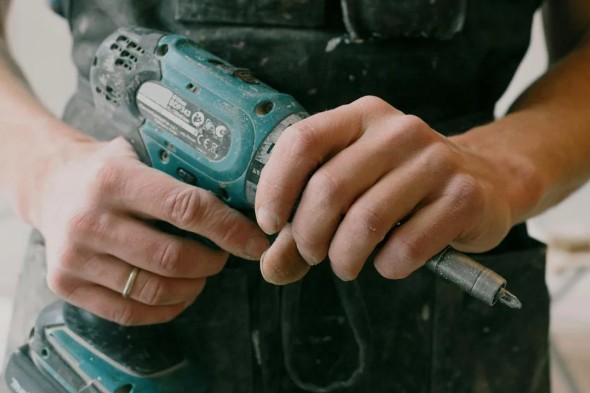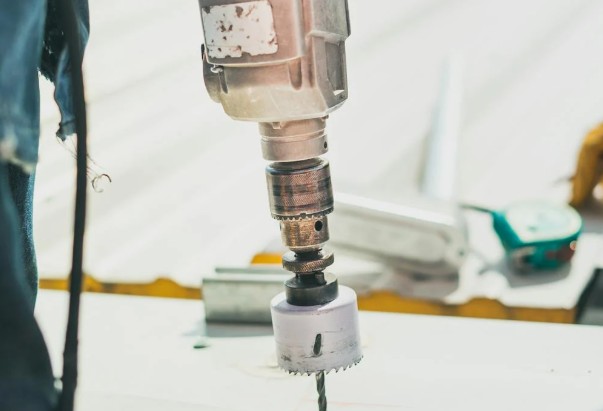In the fast-paced world of infrastructure development, few tools have endured with as much relevance as the pneumatic drill.
Known for its ability to power through dense materials with relentless efficiency, it’s a fixture on job sites ranging from high-rise construction zones to emergency utility repairs.
As someone who’s spent nearly two decades planning and supervising large-scale projects across North America and the Middle East, I can attest to the continuing value of this seemingly old-school tool in today’s high-tech environments.
So, when exactly is a pneumatic drill the preferred choice? Let’s explore the most common—and most critical—scenarios.
Road and Pavement Demolition

This is one of the most recognizable uses of pneumatic drills. On almost any roadway or highway expansion project, pneumatic drills are called in to break apart concrete slabs, chip through asphalt, or prepare sections for resurfacing.
Their consistent power output makes them especially useful when dealing with dense material over prolonged periods.
For city engineers or utility planners, using pneumatic drills during demolition ensures a fast turnaround without the complications that electrical tools can introduce—like overheating, voltage drops, or restricted mobility.
The air-powered design thrives in outdoor, rugged conditions where access to power sources is limited or inconsistent.
Excavating Around Utilities
Pneumatic drills are also widely used for utility access in congested or sensitive underground environments.
Whether the task involves trenching for fiber-optic cable installation or exposing water mains during valve upgrades, these tools allow precise, controlled drilling without the risk of disturbing adjacent utilities.
This is particularly valuable in aging urban environments where maps may be outdated, and unplanned hits on active lines could mean service outages or safety incidents. Pneumatic drills reduce vibration and can be guided more accurately than heavier hydraulic equipment.
Tunneling and Underground Projects
Tunnel projects, especially in early excavation or during structural anchor installation, regularly require tools that perform well in tight, poorly ventilated spaces.
Pneumatic drills are ideal in these scenarios due to their safety profile—they don’t produce sparks, don’t depend on electricity, and are compact enough for hand operation in confined tunnel shafts.
During my involvement in large metro expansions, including in Riyadh and Toronto, pneumatic drills played a key role in stabilizing tunnel faces, preparing areas for reinforcement, and enabling secondary access routes—all without compromising worker safety in hazardous environments.
Petrochemical and Oil & Gas Installations

On refineries and pipeline sites, especially in zones classified as ATEX or intrinsically safe areas, electric tools are not an option due to the risk of sparking. Pneumatic drills are inherently safer, as they’re powered by compressed air and emit no electrical discharge.
They’re frequently used for tasks like removing bolts from corroded flanges, preparing steel surfaces for welding, or drilling into hardened pipe enclosures.
The reliability and safety they offer under high-pressure industrial conditions make them indispensable in scheduled maintenance or shutdown work.
Emergency Repairs and Disaster Recovery
In the aftermath of natural disasters—floods, earthquakes, or building collapses—pneumatic drills become vital tools for search and rescue operations.
Since they can operate without relying on electric power, they’re often used in scenarios where infrastructure is compromised or nonexistent.
During the Hurricane Harvey recovery efforts, for example, crews used pneumatic drills to break through submerged pavement and access stormwater inlets that had been choked with debris.
Their portability, minimal setup requirements, and independence from power grids make them first responders’ tools of choice.
Common Pneumatic Drill Use Cases
| Use Case | Why Pneumatic? |
| Road & Pavement Demolition | No electricity needed; durable for prolonged concrete breaking |
| Utility Excavation | Precision + vibration control; safer for buried services |
| Tunnel/Mine Drilling | Safe in damp zones; works in confined underground areas |
| Oil & Gas Fieldwork | Spark-free operation in explosive environments |
| Emergency Repair | Works in power outages or flooded zones |
Why Pneumatic Drills Still Matter in Modern Infrastructure
Despite advances in electric and battery-operated tools, pneumatic drills maintain their edge because they are purpose-built for hard-hitting, long-duration tasks.
They excel in environments that are too volatile, too remote, or too demanding for other tools.
In my experience, they also integrate well into modern infrastructure workflows, whether you’re planning with BIM models or coordinating with GIS-based utility maps.
Their simplicity is deceptive; when matched with the right compressor setup and operator training, pneumatic drills can outpace more sophisticated tools both in performance and reliability.
From my years in the field, I’ve come to trust pneumatic drills for three key reasons:
1. Durability in extreme environments
2. Low maintenance across multi-phase projects
3. Compliance with industrial safety standards in explosive or wet zones
In an age of automation and smart systems, it’s easy to overlook the importance of foundational tools. But on every successful job site I’ve been part of, pneumatic drills have shown their worth—not just as demolition tools, but as versatile, safe, and reliable workhorses that enable larger infrastructure goals.
If you’re managing a city upgrade, overseeing roadwork logistics, or responding to an infrastructure failure, having pneumatic drills on-hand ensures that no matter the environment, progress won’t stop.



